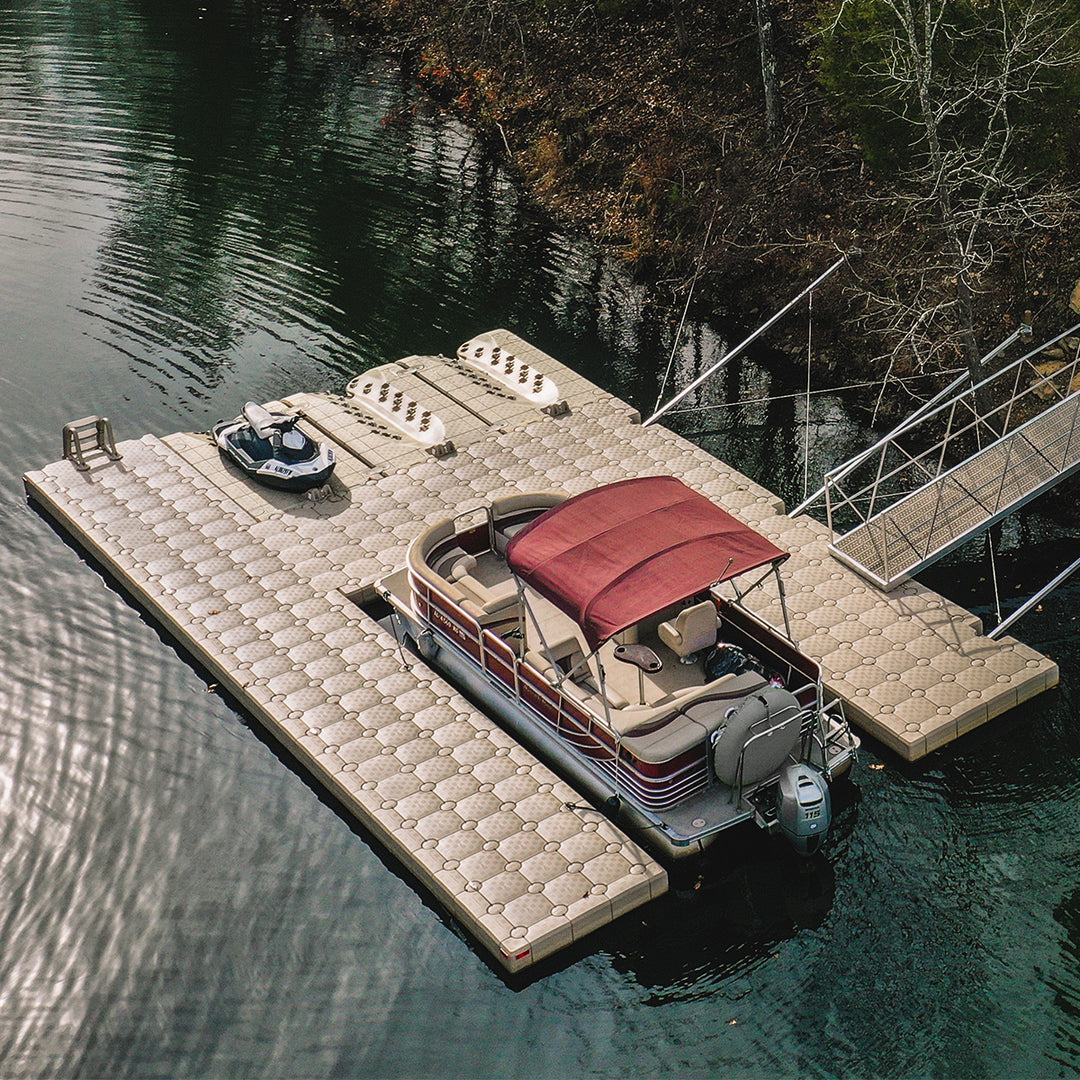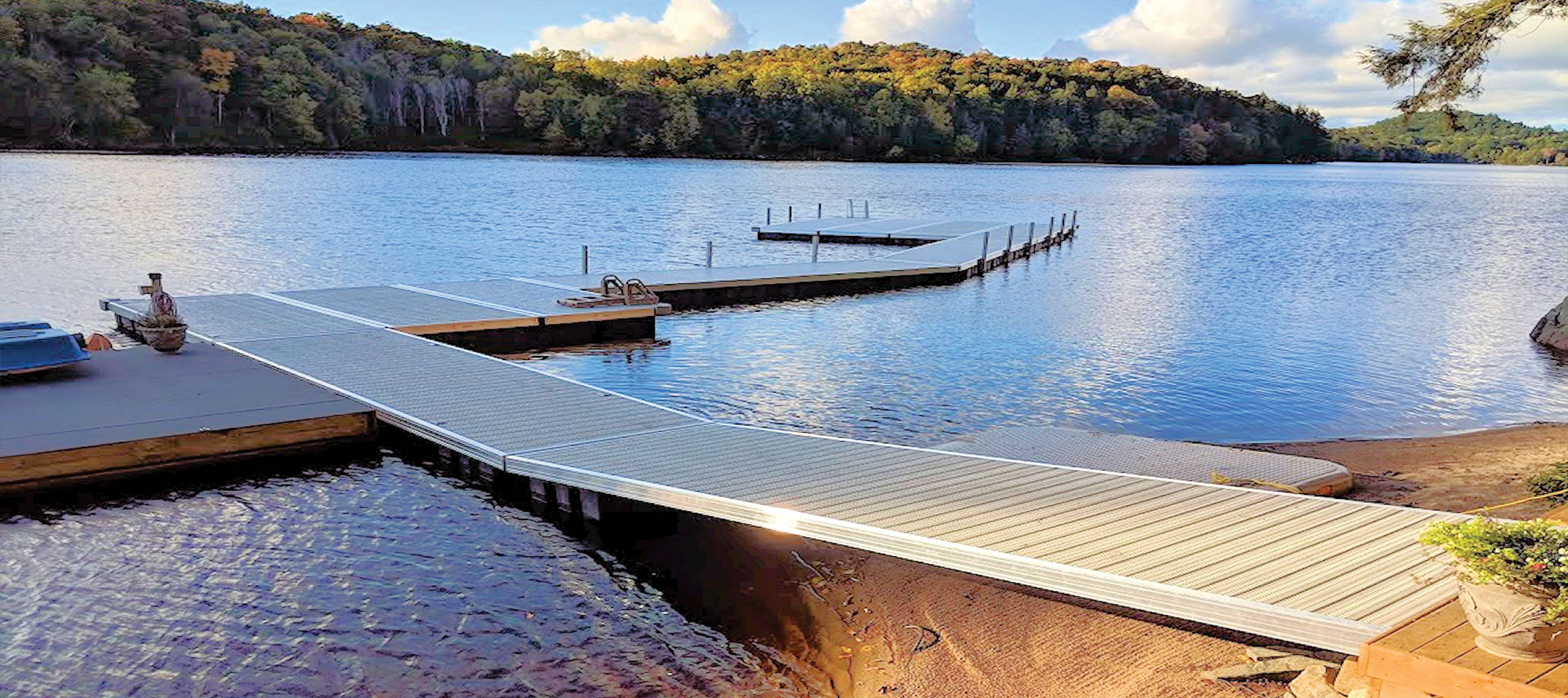Cutting-edge Floating Docks: The Future of Waterside Gain Access To and Leisure
Cutting-edge Floating Docks: The Future of Waterside Gain Access To and Leisure
Blog Article
Produce the Perfect Docking Remedy With Floating Docks
Floating docks present a flexible option for a selection of maritime requirements, adapting flawlessly to varying water degrees and diverse vessel kinds. As we discover the crucial components that add to the effectiveness of floating docks, several crucial variables pertaining to security and upkeep will certainly arise, increasing concerns concerning exactly how to optimize your docking experience.

Benefits of Floating Docks
Floating docks offer numerous benefits that make them a suitable choice for numerous maritime applications. One of the primary advantages is their adaptability to altering water degrees. Unlike dealt with docks, floating docks fluctuate with the tide, ensuring regular availability for vessels. This attribute is specifically vital in locations vulnerable to substantial tidal variations or seasonal water level adjustments.
Additionally, floating docks are typically simpler and quicker to install contrasted to standard set structures. Their modular layout enables uncomplicated setting up and disassembly, promoting upkeep and moving when essential. This adaptability is specifically advantageous for temporary applications or in atmospheres where conditions might change.
Floating docks additionally tend to be a lot more ecologically friendly, as they lessen interruption to the seabed and surrounding water ecological communities. Their resilient nature lowers the danger of damages to aquatic life, advertising a much healthier environment. Moreover, these docks can be personalized to accommodate numerous vessel dimensions, ensuring that they satisfy particular operational requirements - floating docks.
Ultimately, the mix of adaptability, ease of installation, and ecological considerations makes floating docks a very reliable remedy for a large range of maritime needs.
Picking the Right Products
Picking the proper materials for floating docks is crucial to guarantee sturdiness, stability, and long life. The selection of products straight impacts the dock's performance in various environmental conditions, consisting of exposure to water, sunlight, and prospective wear from marine website traffic.
Common materials utilized for floating docks include light weight aluminum, timber, and high-density polyethylene (HDPE) Light weight aluminum is light-weight, corrosion-resistant, and requires minimal upkeep, making it an outstanding option for long life. Its first expense can be higher contrasted to various other materials.
Timber, while cosmetically attractive and offering a traditional appearance, can be at risk to rot and pest damage if not effectively dealt with. Making use of pressure-treated timber or normally long lasting types like cedar or redwood can mitigate these concerns.
HDPE is a preferred selection due to its resistance to UV rays and chemicals, in addition to being ecologically friendly. floating dock builder. It is offered and light-weight in different shades, enabling personalization
Ultimately, the right product selection will certainly rely on details requirements, including budget plan, preferred visual appeals, and environmental considerations. Cautious evaluation of these elements will certainly cause a resilient and effective floating dock option.
Style Factors To Consider for Stability
When developing floating docks, making certain security is an essential aspect that can considerably affect their performance and security. Security in floating dock design is affected by numerous aspects, including buoyancy, weight distribution, and the arrangement of components. An optimum buoyancy system need to make use of materials that offer enough lift while reducing weight. This balance makes certain that the dock continues to be above water, even under varying lots.
Weight circulation is crucial; uniformly dispersing lots across the dock prevents tilting and improves stability. Bigger layouts can provide boosted stability, particularly in harsh water conditions, while longer docks may call for extra supports to avoid drooping.
An additional key factor to consider is the ecological effect, including wave action and wind. Including features such as sidewalls or skirting can help minimize the effects of ecological pressures, preserving security in adverse problems. Inevitably, a combination of thoughtful style, product option, and understanding of environmental aspects will yield a floating dock that satisfies both security and safety needs.
Installation Tips and Strategies

Following, protect the necessary permits and abide by neighborhood policies, which may dictate setup approaches and ecological factors to consider. Involve a qualified specialist experienced in floating dock installations if needed. Usage high-quality products developed for marine environments to enhance sturdiness and durability.
When positioning the dock, straighten it identical to the shoreline to promote very easy accessibility. Make sure that the anchoring system is durable, utilizing cinder block or helical supports to stabilize the dock against wind and wave action. It's crucial to make up seasonal water degree changes, consisting of possible ice motion in chillier climates.
Throughout the installation, double-check the dock's floatation and security prior to settling the anchoring. On a regular basis check the setup for any indications of wear or damage. By adhering to these ideas and strategies, you can attain a protected, functional, and aesthetically pleasing floating dock setup that meets your requirements.
Upkeep and Treatment Standards
Caring and keeping for floating docks is essential to lengthening their lifespan and guaranteeing risk-free usage. Regular assessments must be performed to recognize any type of indications of wear, damage, or aquatic development. Seek fractures, loose installations, or try this blemished locations on the dock's surface, as these issues can jeopardize architectural honesty.
Cleansing is important. Make use of a pressure washing machine to remove algae, barnacles, and debris, which can build up in time. For persistent development, think about eco-friendly cleaner that will not harm water life.
Additionally, inspect the mooring lines and anchors regularly to guarantee they are cost-free and secure from rust. Change any kind of torn or harmed lines immediately to preserve security.
Throughout severe climate, such as tornados or freezing conditions, take precautionary procedures. Secure the dock with added mooring lines and, if viable, remove any detachable elements to avoid damages.
Final Thought
In conclusion, the execution of floating docks offers a effective and versatile docking option appropriate for numerous maritime applications. With proper installation and regular maintenance, floating docks can offer reliable and trusted docking experiences for a broad array of vessels.
As we discover the vital components that contribute to the effectiveness of floating docks, several essential variables regarding security and upkeep will certainly arise, elevating inquiries regarding how to optimize your docking experience. Unlike dealt with docks, floating docks increase and fall with the tide, making sure regular accessibility for vessels.When designing floating docks, making certain stability is a fundamental aspect that can considerably influence their functionality and safety. Stability in floating dock style is affected by various aspects, including buoyancy, weight circulation, and the arrangement of elements. Ultimately, a combination of thoughtful layout, product choice, and understanding of environmental variables will produce a floating dock that satisfies both security and safety needs.
Report this page